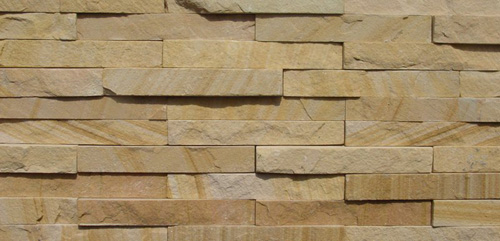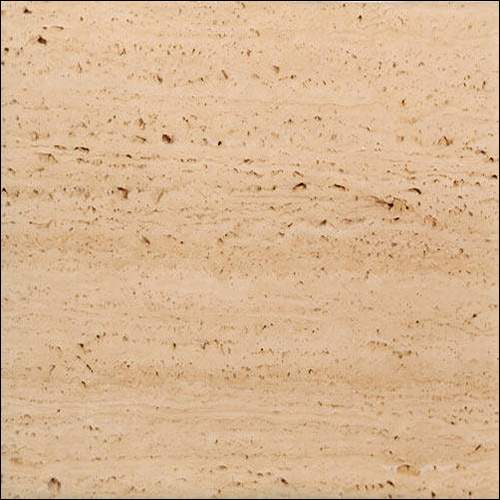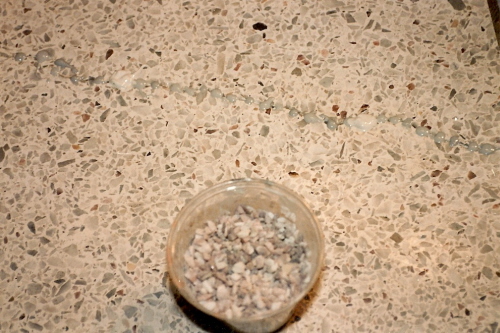|
OTHER STONE SURFACE TREATMENT
Marble and granite are the most common interior stone types that you will encounter. However, there are others. The following is a brief explanation of those types:
Limestone

Limestone is a sandy sedimentary rock composed primarily of calcite or dolomite. It is formed from calcium precipitating out of sea water and is layered with fossilized plant and animal life. Colors are typically white, beige and brown shades, but can be found in grey and black as well. Varies in hardness. When the mineral dolomite is present, it makes the limestone harder and capable of being polished in the same way as true marble. It is more likely to stain than marble. Slate
 Slate can be found both indoors and out. It is a stone that has been metamorphosed from shale and consists of clay-like materials. It can be recognized by its sheet-like appearance and is found in earth-tone colors. Slate will rarely have a high polish unless a coating is placed on it. Slate can be a problem for the architect/designer. It contains a high clay content, so it will often flake, spall and develop efflorescence easily. This is especially true in wet areas. Slate is best treated with a good quality penetrating sealer. Slate can be found both indoors and out. It is a stone that has been metamorphosed from shale and consists of clay-like materials. It can be recognized by its sheet-like appearance and is found in earth-tone colors. Slate will rarely have a high polish unless a coating is placed on it. Slate can be a problem for the architect/designer. It contains a high clay content, so it will often flake, spall and develop efflorescence easily. This is especially true in wet areas. Slate is best treated with a good quality penetrating sealer. Sandstone (also quarzite, flagstone)
 Sandstone is a sedimentary material which consists of sand crystals cemented together with natural clays. Sandstone is very rough because of its sandy structure and is very abrasive on diamond discs. It is acid-resistant and rarely polished. Sandstone is very porous and should be sealed with a penetrating sealer. Sandstone is a sedimentary material which consists of sand crystals cemented together with natural clays. Sandstone is very rough because of its sandy structure and is very abrasive on diamond discs. It is acid-resistant and rarely polished. Sandstone is very porous and should be sealed with a penetrating sealer. Onyx
 Onyx is a type of marble which has been formed by the deposits of cold solutions. It is a translucent material with veins running concentrically to one another. It is very expensive and can be found on table tops and small pieces of furniture. It can be treated just like marble and takes a high shine. Onyx is a type of marble which has been formed by the deposits of cold solutions. It is a translucent material with veins running concentrically to one another. It is very expensive and can be found on table tops and small pieces of furniture. It can be treated just like marble and takes a high shine. Travertine
 Travertine is, in essence, a variety of limestone. It is a sedimentary rock created when hot, carbon dioxide rich water percolates through limestone, such as in hot springs and caves.Travertine cavities are created when the carbon dioxide bubbles are trapped as the stone is formed. Travertine is characterized by these voids in its surface, and although they occur naturally, they suggest considerable wear over time giving an appearance that cannot be simulated. These voids are generally left natural, but can be filled and the stone honed to give a flatter, smoother surface. Travertine is, in essence, a variety of limestone. It is a sedimentary rock created when hot, carbon dioxide rich water percolates through limestone, such as in hot springs and caves.Travertine cavities are created when the carbon dioxide bubbles are trapped as the stone is formed. Travertine is characterized by these voids in its surface, and although they occur naturally, they suggest considerable wear over time giving an appearance that cannot be simulated. These voids are generally left natural, but can be filled and the stone honed to give a flatter, smoother surface. Soapstone
 Soapstone is one of the softest materials composed of talc. For this reason it makes an excellent carving material and can be found on fireplace surrounds and hearths. It is treated like marble and should be sealed. Soapstone is one of the softest materials composed of talc. For this reason it makes an excellent carving material and can be found on fireplace surrounds and hearths. It is treated like marble and should be sealed. Artificial stone  Man Made Stones are derived of unnatural mixtures such resin or cement with the additive of stone chips. Man Made Stones are derived of unnatural mixtures such resin or cement with the additive of stone chips.
Terrazzo: Marble and granite chips embedded in a cement composition. Agglomerate or conglomerate: Marble chips embedded in a colored resin composition. Cultured or Faux Marble: A mix of resins that are painted or mixed with a paint to looks like marble.
And truth be told... it is possible to stain quartz and the resin in quartz is more susceptible to heat damage than granite.
|
 Slate can be found both indoors and out. It is a stone that has been metamorphosed from shale and consists of clay-like materials. It can be recognized by its sheet-like appearance and is found in earth-tone colors. Slate will rarely have a high polish unless a coating is placed on it. Slate can be a problem for the architect/designer. It contains a high clay content, so it will often flake, spall and develop efflorescence easily. This is especially true in wet areas. Slate is best treated with a good quality penetrating sealer.
Slate can be found both indoors and out. It is a stone that has been metamorphosed from shale and consists of clay-like materials. It can be recognized by its sheet-like appearance and is found in earth-tone colors. Slate will rarely have a high polish unless a coating is placed on it. Slate can be a problem for the architect/designer. It contains a high clay content, so it will often flake, spall and develop efflorescence easily. This is especially true in wet areas. Slate is best treated with a good quality penetrating sealer.





 Sandstone is a sedimentary material which consists of sand crystals cemented together with natural clays. Sandstone is very rough because of its sandy structure and is very abrasive on diamond discs. It is acid-resistant and rarely polished. Sandstone is very porous and should be sealed with a penetrating sealer.
Sandstone is a sedimentary material which consists of sand crystals cemented together with natural clays. Sandstone is very rough because of its sandy structure and is very abrasive on diamond discs. It is acid-resistant and rarely polished. Sandstone is very porous and should be sealed with a penetrating sealer. Onyx is a type of marble which has been formed by the deposits of cold solutions. It is a translucent material with veins running concentrically to one another. It is very expensive and can be found on table tops and small pieces of furniture. It can be treated just like marble and takes a high shine.
Onyx is a type of marble which has been formed by the deposits of cold solutions. It is a translucent material with veins running concentrically to one another. It is very expensive and can be found on table tops and small pieces of furniture. It can be treated just like marble and takes a high shine. Travertine is, in essence, a variety of limestone. It is a sedimentary rock created when hot, carbon dioxide rich water percolates through limestone, such as in hot springs and caves.Travertine cavities are created when the carbon dioxide bubbles are trapped as the stone is formed. Travertine is characterized by these voids in its surface, and although they occur naturally, they suggest considerable wear over time giving an appearance that cannot be simulated. These voids are generally left natural, but can be filled and the stone honed to give a flatter, smoother surface.
Travertine is, in essence, a variety of limestone. It is a sedimentary rock created when hot, carbon dioxide rich water percolates through limestone, such as in hot springs and caves.Travertine cavities are created when the carbon dioxide bubbles are trapped as the stone is formed. Travertine is characterized by these voids in its surface, and although they occur naturally, they suggest considerable wear over time giving an appearance that cannot be simulated. These voids are generally left natural, but can be filled and the stone honed to give a flatter, smoother surface. Soapstone is one of the softest materials composed of talc. For this reason it makes an excellent carving material and can be found on fireplace surrounds and hearths. It is treated like marble and should be sealed.
Soapstone is one of the softest materials composed of talc. For this reason it makes an excellent carving material and can be found on fireplace surrounds and hearths. It is treated like marble and should be sealed. Man Made Stones are derived of unnatural mixtures such resin or cement with the additive of stone chips.
Man Made Stones are derived of unnatural mixtures such resin or cement with the additive of stone chips.